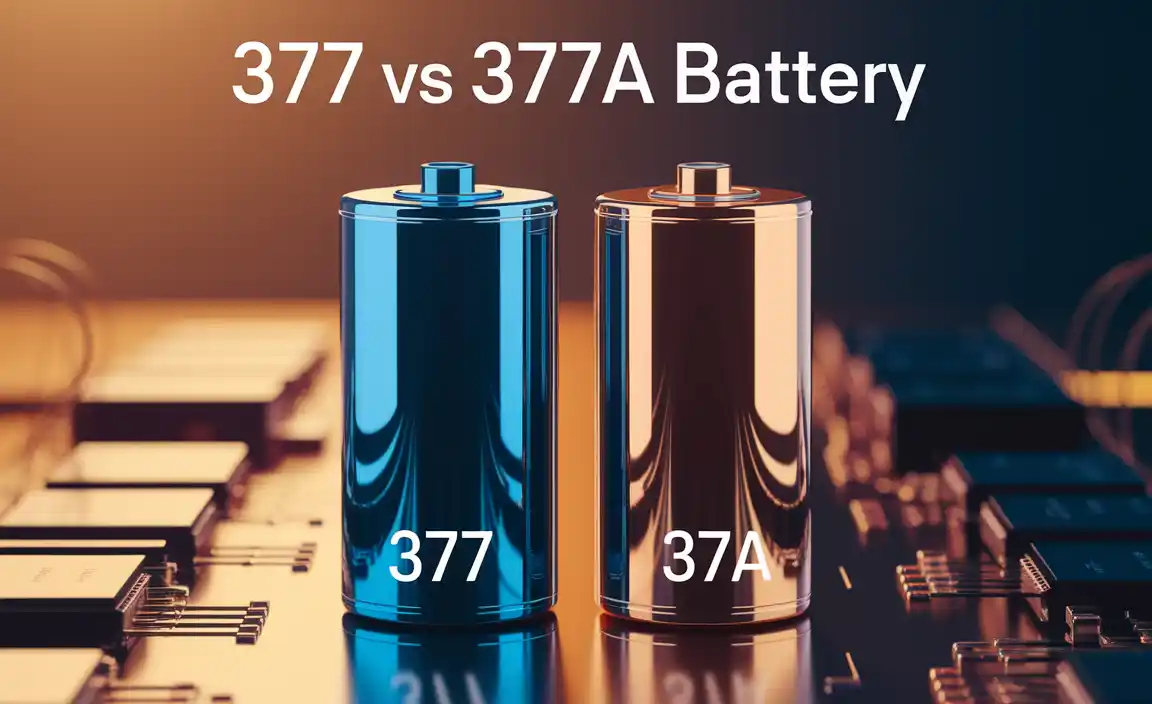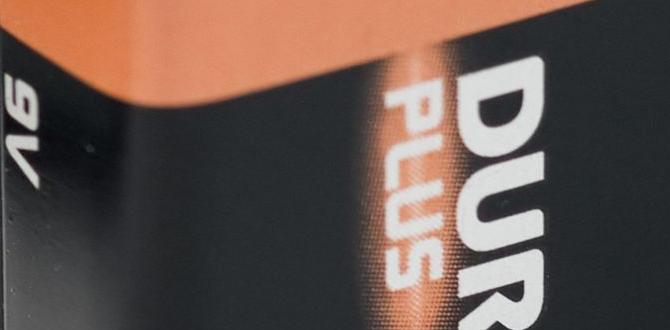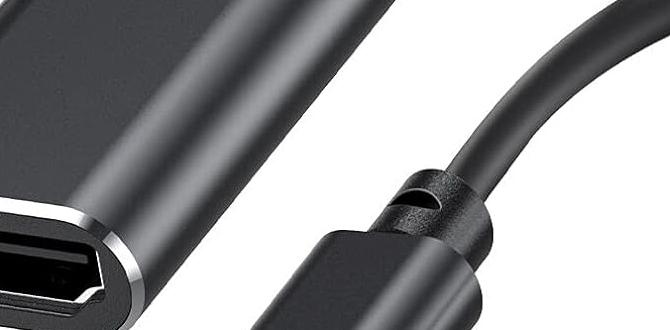Stop-Start Truck Batteries: Affordable Power Solutions Explained. Get the right, budget-friendly battery for your truck’s start-stop system without overspending. Find out what to look for and how to choose the best value option for reliable performance.
Is your truck’s start-stop system acting up, or are you just looking for a new battery? Finding a suitable replacement can feel tricky, especially when you want to save money. Many drivers worry about the cost of these specialized batteries, fearing they’ll have to break the bank. But what if you could get a reliable, affordable stop-start battery for your truck that keeps everything running smoothly? This guide will walk you through choosing a budget-friendly option, making sure you get great value without sacrificing performance. We’ll break down what makes these batteries different and how to pick the right one for your needs, so you can get back on the road with confidence.
Why Your Truck Needs a Special Stop-Start Battery
Modern trucks often come with a “start-stop” system to save fuel and reduce emissions. This system automatically shuts off the engine when you’re stopped, like at a traffic light, and restarts it instantly when you want to move again. This happens many times during a typical drive. Because of this constant starting and stopping, your truck needs a specific type of battery. Regular batteries just can’t handle the extreme demands of thousands of engine restarts. They can wear out quickly, leaving you stranded. Stop-start batteries are built differently to withstand this frequent cycling. They use advanced technology to deliver the power needed for each restart, all while being more durable.
The Technology Behind Stop-Start Batteries
Stop-start systems rely on either Enhanced Flooded Battery (EFB) or Absorbent Glass Mat (AGM) technology. EFB batteries are a good upgrade from standard flooded batteries and are suitable for basic start-stop functions. They offer better performance and longer life for moderate start-stop use. AGM batteries are more advanced and are designed for vehicles with more demanding electrical needs, including frequent start-stop cycles, high-performance audio systems, and other power-hungry accessories. AGM batteries are sealed, spill-proof, and can handle deeper discharges, making them very robust. Making the right choice here ensures your battery can keep up with your truck’s energy needs.
EFB vs. AGM: Which is Right for Your Truck?
Choosing between EFB and AGM depends on your truck’s specifications and your driving habits. Even if you’re looking for a cheap option, understanding these differences helps you get the best value. An EFB battery might be sufficient and more budget-friendly if your truck has a simpler start-stop system without many extra electrical loads. However, if your truck has advanced features or you frequently stop and start in heavy traffic, an AGM battery, while often more expensive upfront, can offer better longevity and reliability. Always check your truck’s owner’s manual or consult a professional to confirm the type of battery it requires. Using the wrong type can lead to premature failure and costly repairs.
Here’s a quick look at their typical applications and benefits:
| Feature | EFB (Enhanced Flooded Battery) | AGM (Absorbent Glass Mat) |
|---|---|---|
| Best For | Basic start-stop systems, moderate cycling | Advanced start-stop, high electrical demands, deep cycling |
| Durability | Better than standard flooded, good for moderate use | Excellent durability, handles frequent starts and deep discharges |
| Price | Generally more affordable | Typically more expensive |
| Maintenance | Low maintenance | Maintenance-free |
| Safety | Standard safety features | Sealed, spill-proof, more vibration resistant |
The “Cheap” Myth: What to Look for in Value
When we talk about a “cheap stop-start battery for trucks,” it’s important to define what that means. It doesn’t necessarily mean the lowest price tag. True value comes from a balance of cost, performance, and lifespan. A battery that’s incredibly cheap might fail much sooner, making it more expensive in the long run. Instead, focus on finding a battery that offers good performance for its price, backed by a decent warranty. Look for reputable brands known for quality, even in their more affordable lines. Often, you can find excellent mid-range options that provide the reliability you need without the premium price of top-tier models.
Key Features for a Budget-Friendly Stop-Start Battery
To get the best bang for your buck, keep an eye out for these key features:
- Correct Technology: Ensure it’s either an EFB or AGM battery as required by your truck.
- Sufficient Cold Cranking Amps (CCA): This rating indicates the battery’s ability to start an engine in cold weather. Make sure it meets or exceeds your truck’s requirements.
- Reserve Capacity (RC): This tells you how long the battery can deliver power if the alternator fails. A higher RC offers more buffer.
- Warranty: A good warranty is a sign of a manufacturer’s confidence in their product. Look for at least 1-3 years.
- Reputable Brand: Stick with established brands that have a good track record for reliability.
Understanding Battery Ratings: CCA and RC Explained
Don’t let these abbreviations scare you! Cold Cranking Amps (CCA) is the main number to check for starting power. It’s the number of amps a battery can deliver at 0°F (-18°C) for 30 seconds while maintaining at least 7.2 volts. Your truck’s manual will specify the minimum CCA needed. Reserve Capacity (RC) measures how long a fully charged battery can provide power at 80°F (27°C) while discharging at 25 amps, until its voltage drops to 10.5 volts. A higher RC is always better for powering accessories when the engine is off or in start-stop scenarios.
Where to Find Affordable Options
Several places offer good deals on stop-start batteries. While manufacturer dealerships are often the priciest, consider these alternatives for better pricing:
- Auto Parts Stores: Major chains like AutoZone, Advance Auto Parts, O’Reilly Auto Parts, and NAPA often have sales and a range of brands from economy to premium. They also offer free battery testing and installation.
- Online Retailers: Websites like Amazon, eBay, and specialized battery suppliers can have competitive prices. Be sure to check shipping costs and return policies. Always verify the battery is compatible with your truck.
- Discount Retailers: Stores like Walmart sometimes carry reputable battery brands at lower prices.
- Independent Mechanics: Local garages might have access to more budget-friendly battery suppliers.
Comparing Prices and Warranties
When you find potential “cheap” options, it’s wise to do a little comparison shopping. Note the CCA, RC, and most importantly, the warranty period. A battery that costs $20 less but has half the warranty might not be a true bargain. For example, a $150 battery with a 3-year free replacement warranty is often a much better deal than a $130 battery with only a 1-year warranty. Remember that the battery’s lifespan is heavily influenced by how it’s used and maintained, but a good warranty offers peace of mind and protection against defects.
When to Replace Your Truck’s Stop-Start Battery
Even the best batteries don’t last forever. Understanding the signs that your battery is nearing the end of its life can prevent unexpected breakdowns. For start-stop systems, battery health is even more critical because they are under continuous stress. Early replacement means avoiding inconvenience and potential damage to other electrical components.
Common Signs of a Failing Battery
Pay attention to these warning signs:
- Slow Engine Crank: If the engine cranks slower than usual when starting.
- Warning Lights: The battery warning light on your dashboard may illuminate.
- Electrical Issues: Dim headlights, flickering interior lights, or power windows operating slowly can indicate a weak battery.
- Swollen Battery Case: If the battery case looks puffy or warped, it’s a sign of internal damage, possibly from overcharging or extreme heat.
- Smell of Rotten Eggs: This sulfuric smell often means the battery is leaking or has been overcharged.
- Old Age: Most automotive batteries last between 3 to 5 years. If yours is older than that, it’s wise to have it tested.
The Importance of Battery Testing
A simple battery test can tell you a lot about its condition. Most auto parts stores and repair shops offer free battery testing. They use a specialized device that checks the battery’s voltage, cranking power, and overall health. This test can reveal if the battery is just low on charge or if it has internal damage and needs replacement. It’s a quick and easy way to diagnose potential problems before they leave you stranded. You can even perform a basic voltage test yourself with a multimeter; a healthy, fully charged battery should read around 12.6 volts or higher when the engine is off. For more detail, professional testing is best.
Can You Use a Regular Battery in a Start-Stop Vehicle?
The short answer is no, you generally cannot use a standard flooded battery in a vehicle designed for EFB or AGM stop-start batteries. These vehicles have sophisticated battery management systems that are calibrated for the unique demands of EFB/AGM technology. Using a regular battery can lead to several problems:
- Premature Failure: A standard battery will likely fail much faster under the stress of frequent starts and deep discharges.
- System Malfunctions: The vehicle’s start-stop system may not work correctly, or it could disable itself. Other electronic systems might also experience issues.
- Reduced Lifespan for Other Components: Unstable power from an inadequate battery can stress other sensitive electronics in your truck.
Always refer to your owner’s manual to confirm the exact battery type and specifications required. A reputable source like the U.S. Department of Energy’s fuel economy website offers insights into fuel-saving technologies like start-stop systems, emphasizing their design considerations.
Choosing and Installing Your Budget-Friendly Battery
Once you’ve decided on the right type and are ready to buy, the process is straightforward. Finding a cheap stop-start battery doesn’t mean compromising on the installation process. Safety is paramount, so take your time and follow these steps carefully.
Step-by-Step Guide to Battery Installation
Here’s a general guide. Always consult your truck’s service manual for vehicle-specific instructions if you’re unsure.
- Gather Your Tools: You’ll typically need a wrench or socket set (often 10mm and 13mm), a wire brush or battery terminal cleaner, gloves, and eye protection.
- Park Safely: Park your truck on a level surface and turn off the engine. Remove the keys from the ignition.
- Locate the Battery: Batteries are usually under the hood, but some trucks may have them in the trunk or under a seat.
- Disconnect the Negative Terminal First: Using your wrench, loosen the nut on the negative (-) terminal clamp. Remove the negative cable and secure it away from the battery post to prevent accidental contact.
- Disconnect the Positive Terminal: Now, loosen and remove the positive (+) terminal clamp. Place it aside, ensuring it doesn’t touch any metal parts.
- Remove the Battery Hold-Down: Most batteries are secured by a bracket or clamp. Unscrew and remove this to free the battery.
- Lift Out the Old Battery: Batteries are heavy! Lift with your legs, not your back. If it’s difficult, you might need help.
- Clean the Tray and Terminals: Use a wire brush to clean any corrosion from the battery tray and the cable clamps.
- Install the New Battery: Carefully place the new battery into the tray, ensuring it’s oriented correctly (positive and negative terminals in the right positions).
- Secure the Battery: Reinstall the hold-down bracket or clamp to keep the battery firmly in place.
- Connect the Positive Terminal First: Place the positive cable clamp onto the positive terminal and tighten it securely with your wrench.
- Connect the Negative Terminal: Attach the negative cable clamp to the negative terminal and tighten it.
- Final Check: Ensure both terminals are tight and nothing is loose.
- Start Your Truck: Start the engine to make sure everything is working properly. Some vehicles may need to relearn idle settings or have radio presets reset.
Safety Precautions You Must Follow
Battery acid is corrosive, and batteries store a lot of electrical energy. Always prioritize safety:
- Wear Safety Gear: Always wear safety glasses and gloves.
- Avoid Sparks: Never smoke or allow sparks near a battery. Batteries can release flammable hydrogen gas.
- Proper Venting: Ensure good ventilation when working with batteries.
- No Metal Near Terminals: Be extremely careful not to let metal tools or objects touch both battery terminals simultaneously, as this can cause a dangerous short circuit.
- Heavy Lifting: Batteries are heavy. Lift properly to avoid injury.
What to Do with Your Old Battery
Don’t throw your old battery in the trash! Car batteries contain lead and sulfuric acid, which are hazardous materials. They are also valuable and recyclable. Most places where you buy a new battery will accept your old one for recycling, often providing a small credit. This is usually done through a core charge when you purchase the new battery. Auto parts stores, many repair shops, and local recycling centers are equipped to handle battery disposal responsibly. Reputable recycling programs ensure these materials are handled safely and reused, protecting the environment. You can find local recycling drop-offs through resources like Earth911.
Battery Care for Longer Life
Even with a budget-friendly battery, good maintenance can extend its lifespan significantly:
- Keep Terminals Clean: Check for corrosion (a white or bluish powdery substance) and clean it off regularly with a wire brush and a mixture of baking soda and water.
- Ensure Connections are Tight: Loose terminals can cause charging issues and poor electrical connection.
- Protect from Extreme Temperatures: While you can’t control the weather, try to avoid parking in direct, intense sun for prolonged periods during very hot weather, as extreme heat can degrade batteries faster.
- Avoid Deep Discharges: Try not to drain the battery completely, for example, by leaving lights on. While EFB and AGM batteries handle deep discharges better than standard ones, frequent deep discharges will still shorten their life.
- Regular Testing: Have your battery tested annually, especially if it’s over 2 years old, to catch issues early.
Maintaining Your Truck’s Electrical System
A healthy battery is part of a healthy electrical system. Ensuring all components are working together smoothly helps your battery, especially a budget-friendly one, perform at its best and last longer.
The Role of the Charging System
Your truck’s alternator is responsible for recharging the battery as you drive and powering the vehicle’s electrical systems when the engine is running. For start-stop systems, the alternator and battery work in a closely coordinated manner. If your alternator isn’t functioning correctly, it can’:
- Undercharge the battery: Not providing enough power to fully recharge it.
- Overcharge the battery: Damaging it with too much voltage.
- Cause voltage fluctuations that strain the battery.
Signs of a failing alternator include dimming headlights, a battery warning light, or unusual noises from the engine bay. If you suspect an alternator issue, get it checked by a professional. Keeping your charging system in good order is vital for battery longevity.
Understanding Modern Battery Management Systems
Most trucks with stop-start technology have a Battery Management System (BMS). This sophisticated computer module monitors the battery’s state of charge, temperature, and health. It tells the engine control unit (ECU) when to engage or disengage the start-stop function based on the battery’s condition. This is why it’s crucial to replace a start-stop battery with the correct type (EFB or AGM). The BMS is calibrated for these specific batteries and may not function correctly with a standard type, potentially reducing battery life and affecting vehicle performance. If you install a new battery, especially an AGM in a vehicle that had an AGM, some programming or registration might be required by the BMS; consult your service manual or a professional.
Beyond Batteries: Other Power Solutions
While focusing on truck batteries, it’s good to know about other power-related devices that can be helpful:
- Phone Batteries: Like car batteries, phone batteries degrade over time. Keeping your phone charged appropriately (avoiding extreme heat and full discharge when possible) helps.




